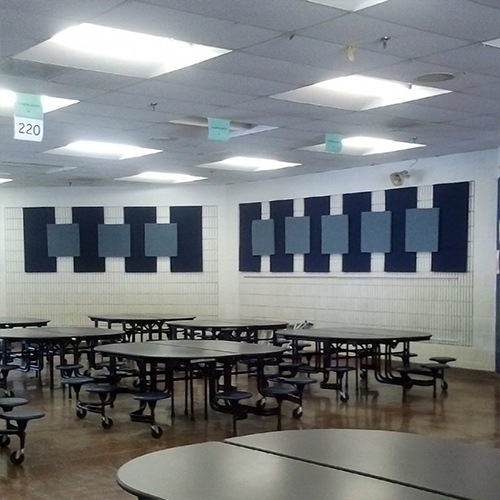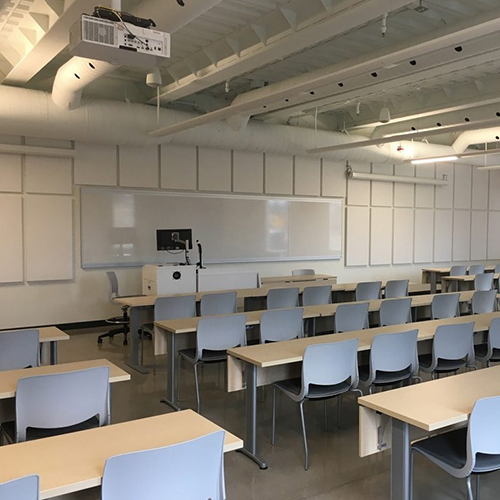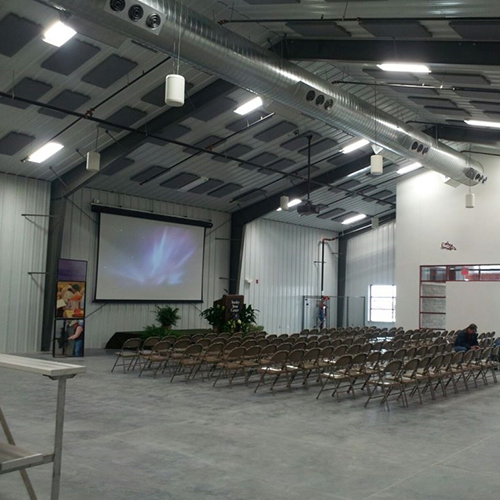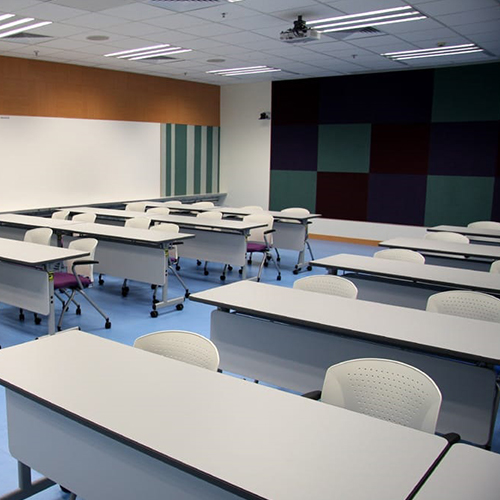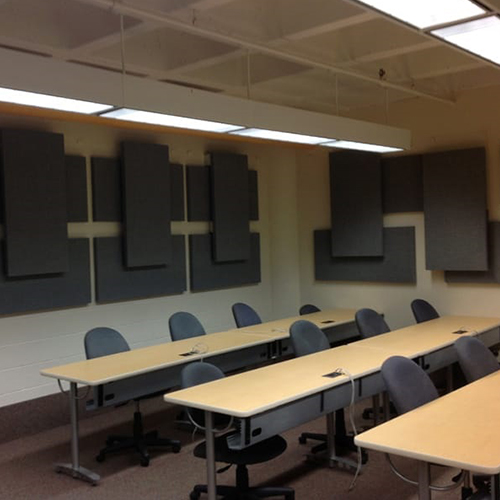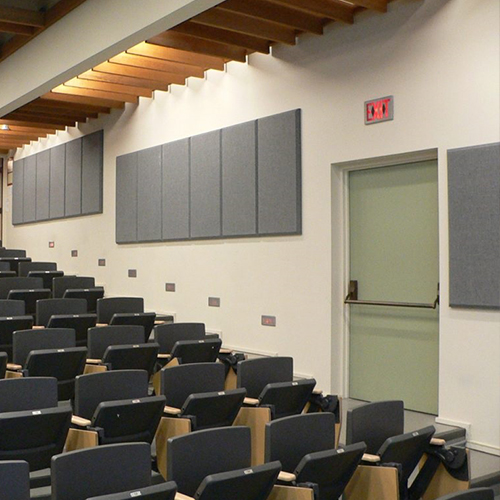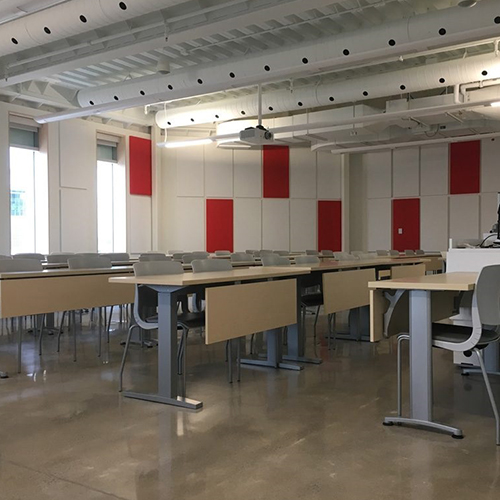Education
Sound Treatment for Schools, College & Institutes
It is easy to engineer better acoustics by installing high-performance acoustic ceilings in classrooms at schools. Mandi Acoustics provides consultancy, design, and supply of acoustic treatment for schools, colleges, and institutes all over South Africa. We work directly with schools as well as architects.
Recent studies have shown that many classrooms have poor acoustics. As a result, children with normal hearing are often unable to make out what is being said in class. While adults will guess at missing words, children find it much harder to fill in the gaps and their educational development can suffer.
Better acoustics in the classroom have been shown to reduce the teacher’s heart rate, according to research by students at a leading technological institute in Pretoria


Old schools with high ceilings
Better acoustics are sorely needed in many old school buildings. A lot of the public and private schools are old, with ceilings up to ten feet high and absolutely no noise abatement measures. No one is checking the acoustics in these schools, since there is no requirement to improve them. Old schools have big classrooms, often as large as 50 square feet, designed solely for frontal teaching. With ceiling heights of ten feet and no acoustic treatment of any kind, the acoustics are very poor.
The problem is that education managers and head teachers are often unaware of the solutions available. And cost is the driving factor in renovation projects. Many school renovation and planning architects have told us that they have no budget for acoustics.
CONTACT OUR SALES TEAM TODAY!
Our Sales Consultants are waiting to assist you. Get in touch with us for all your acoustic needs. Alternatively call us on 0785625428
Why Are Some Classrooms Acoustically Bad?
There are three main reasons why rooms may be acoustically bad for speech:
-
They may be too reverberant for the speech sounds produced in them
-
They may be noisy because of weak resistance they offer to the penetration of noise from outside or from nearby rooms.
-
They may be shaped so that the speakers are more or less screened from their audience or part of it.
Amount of Acoustic Absorption Required
Part of the sound from a teacher, the direct sound, passes directly to the ears of his/her pupils. Another part travels to the room surfaces and is reflected, eventually reaching the pupils ears from many directions at close intervals: this is called reverberant sound. If there is too much reverberant sound, the pupil is still receiving the reflected sounds of previous syllables when he is trying to cope with the direct sound of later syllables. The two then interfere, and speech is difficult to understand. The amount of reverberation is usually expressed as the reverberation time, which is the time taken for the sound to die away after its source has stopped. It is determined by the volume of the space and its capacity for sound absorption and is defined as the time taken for the sound to decay by 60 decibels. It may vary from half a second in an ordinary living room to 8 seconds or more in a large assembly hall or gymnasium. A classroom or teaching space with a long reverberation time of several seconds will cause syllables to be prolonged so that they over lap, MandiFlat form or Acoustic Ceiling Tiles will reduce the reverberation time and will improve speech intelligibility.

In classrooms and other rooms for speech, large amounts of fixed acoustic absorption are often required particularly where rooms have high volumes, as often occurs in older buildings. It is advisable to contact our sales team so that the correct amount of sound absorption can be calculated for the space in question.
Effect of Reverberation on Speech
Amount of acoustic absorption requiredDistribution of absorbent panels & tiles
The location of acoustic absorption within a room is important. The traditional calculation of reverberation time assumes that the absorbent surfaces in a room are reasonably evenly distributed. If this is not so, the reverberation time equation is not valid and undesirable local variations in the acoustics can occur, particularly in large rooms or halls. Large areas of acoustically reflective material can also lead to echoes, focusing and standing waves. Where absorption occurs only on the floor and ceiling, for example in a solution applying Acoustic Ceiling Tiles and carpeted floors, users may experience an overemphasis on sound reflections in a horizontal plane. This often leads to ‘flutter echoes’ between walls, which result in the actual reverberation time being considerably longer than the calculated reverberation time. A much better solution, especially in large rooms, is to distribute some of the absorptive Acoustic Panels on the walls.
Call us on 078 562 5428 or contact our sales team

